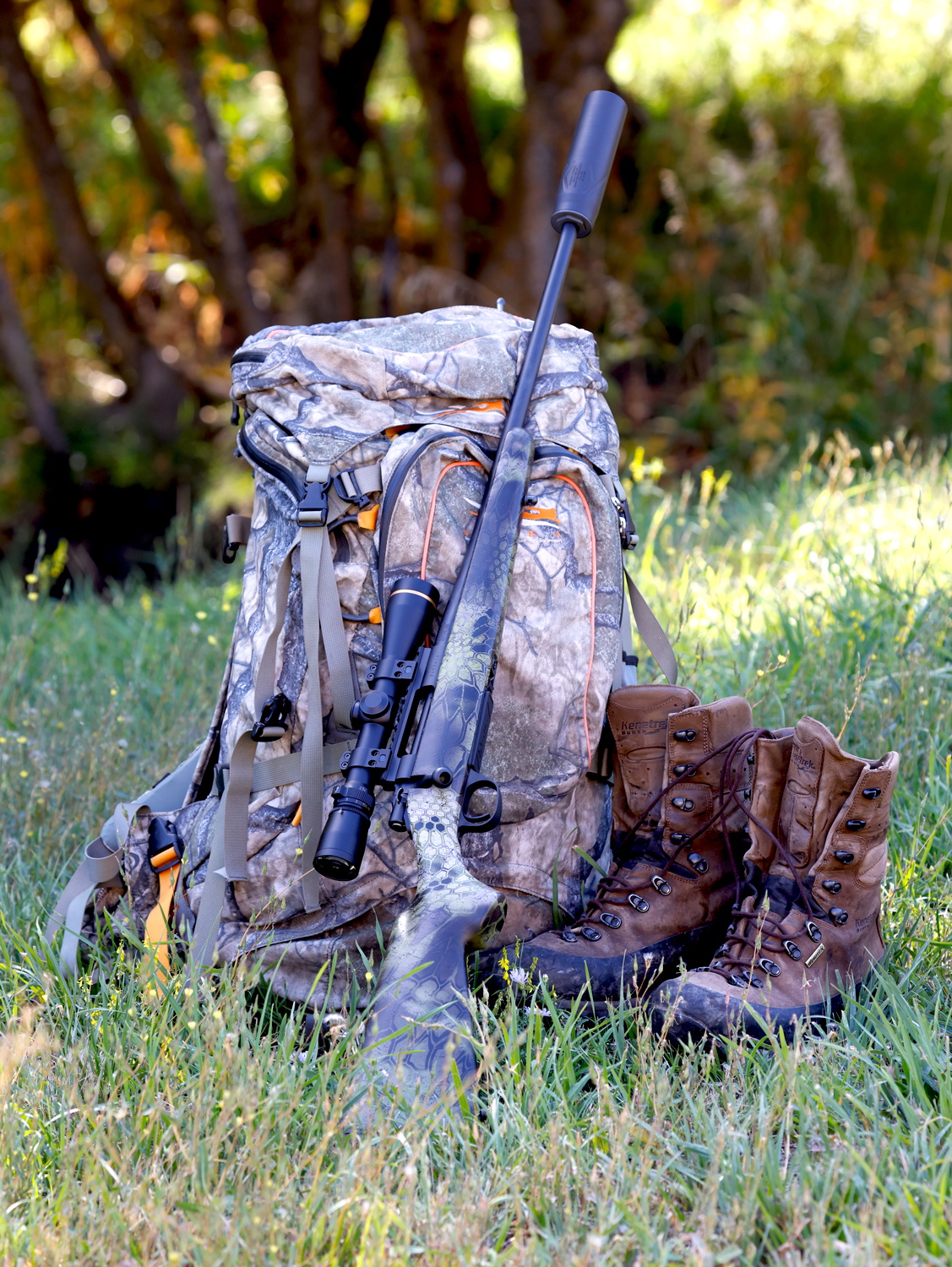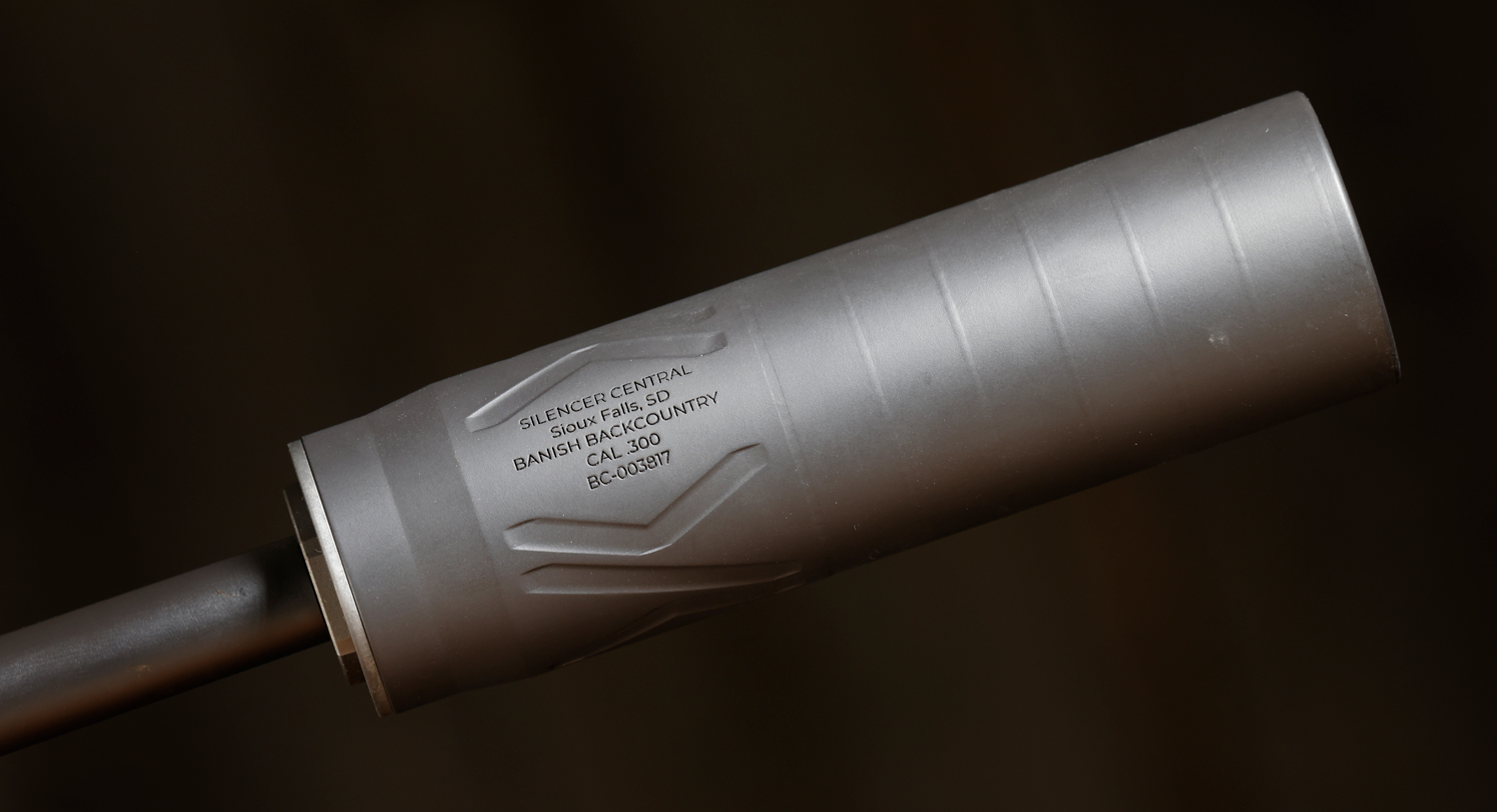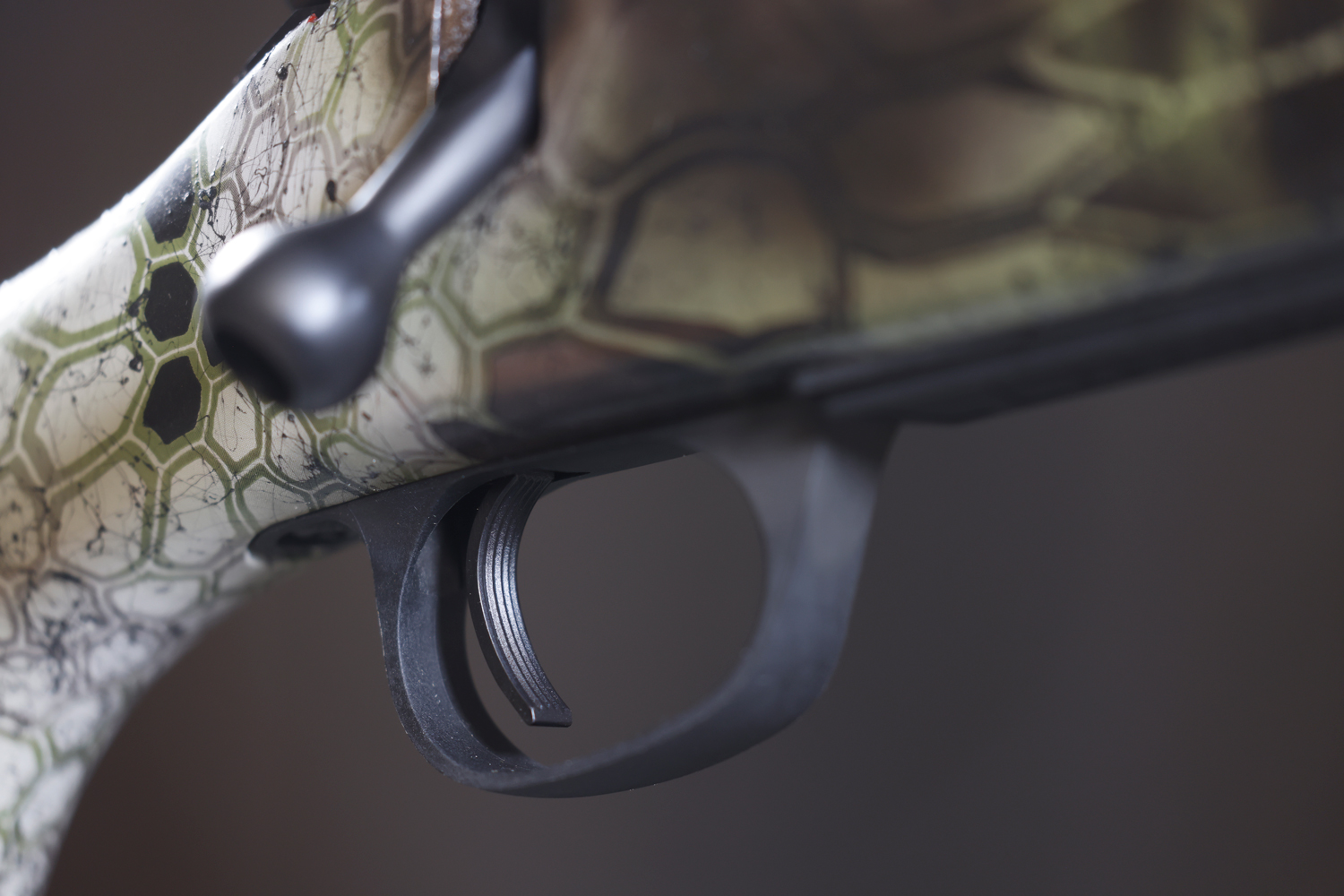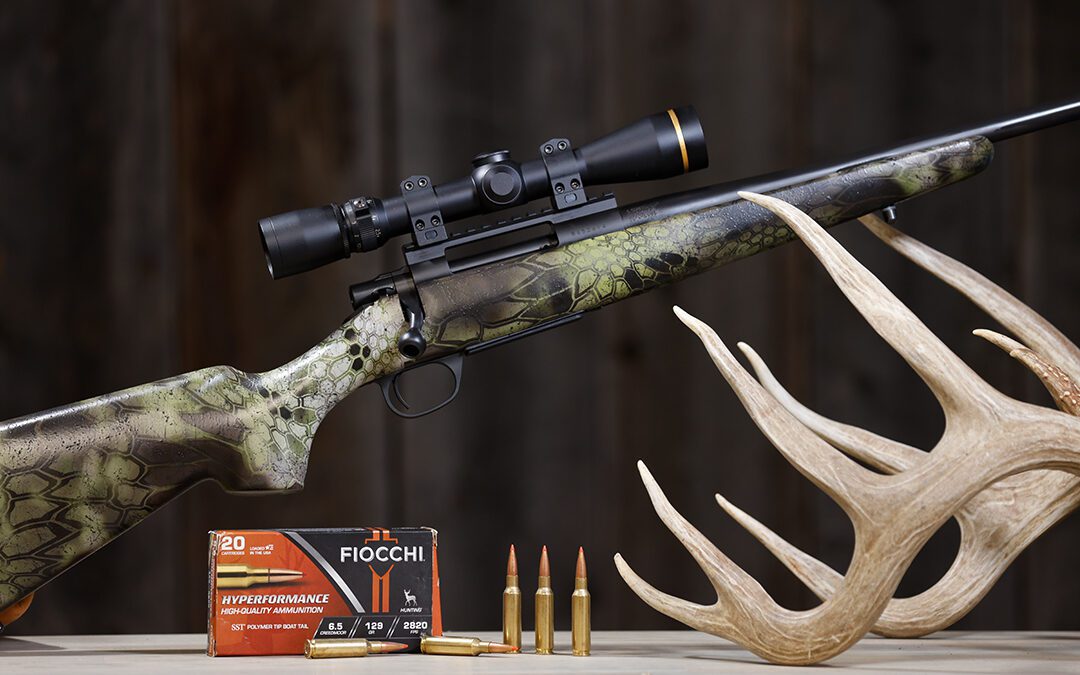Conventional wisdom suggests this rifle shouldn’t exist let alone function smoothly and shoot precisely. Yet here it is: Howa’s Super Lite.
If there is a lighter weight mass-produced bolt-action hunting rifle than the 4-pound, 7-ounce Super Lite, I’ve yet to hear of it. And if one exists, I doubt it will shoot with equal, sub-MOA precision. But if it does, I doubt you’ll pay less than the Super Lite’s MSRP of $1,399.
At first heft the Super Lite feels like a kid’s BB gun, too insubstantial to safely ignite enough nitrocellulose to generate 62,000 psi of pressure and propel a 130-grain bullet 2,836 fps. Yet that’s what my sample model did. And the first three 129-grain Fiocchi rounds I fired at 100 yards gathered inside a 1.30-inch circle. The last three Hornady 147-grain ELD-Match bullets I fired bunched inside 0.70-inch. In between those Sierra’s 130-gr Tipped Game Kings huddled 0.97-inch. And my shoulder didn’t even know it had happened.

Recoil is the fear driving skepticism of super light rifles. Sharp, heavy, painful recoil. This Super Lite in 6.5 Creedmoor produced none that these old bones could detect. I’d planned to use this Howa with a suppressor threaded to the end of its 20-inch, hammer-forged barrel, but, in the interest of full disclosure, figured I’d better endure a few unsuppressed blows first. They never came. According to my recoil calculator, when firing those 147-grain bullets, I was absorbing 22.17 foot-pounds of recoil energy at a recoil velocity of 17.81 feet per second. That’s 1 foot-pound more energy and 5 fps more velocity than generated by a 180-grain 30-06 fired in a 9-pound rifle. Sure didn’t feel like it. Can we credit the Howa’s 1/2-inch Limbsaver recoil pad? Or its Stocky’s Accublock carbon fiber composite stock? There’s long been a theory that certain composite stocks somehow absorb recoil and spread it over time. I don’t know. Certainly the high, straight-line comb moderated any cheek slap. Removed from the barreled action, the stock weighs 16 ounces. I find it crazy that a rifle this light can control recoil so well.

With fear of recoil no factor, I settled in and test-fired four brands of ammo with and without a Silencer Central Backcountry silencer attached. Some shot faster and grouped tighter with the muffler, some the opposite. Were I planning to hunt with this rifle, and I think I will, I’d find a load matched to the silencer for the sound reduction if nothing else. Being free to swing into action and shoot in an instant without fear of ringing ears and additional hearing loss is priceless. The threaded muzzle of the 20-inch Super Lite’s hammer forged barrel suggests Howa designers planned for the can. The 5-inch titanium Backcountry adds just 7.5 ounces to the set up. With the Leupold VX-III 2.5-8X36mm scope screwed to the Picatinny rail that came on the Super Lite and three rounds in the detachable polymer magazine, the hunt-ready rifle weighs 6.5 pounds and stretches 44 inches long.
The unlikely Howa Super Lite springs from an improbable history that has taken its manufacturer from enemy to ally, from textiles to war munitions to sporting rifles. The Howa bolt-action has connections with Weatherby, Mossberg, Smith & Wesson and the Biggest Little City in the World but not, despite an early name, a motor car manufacturer.
The automobile reference stems from Howa’s birth name in 1907: Toyoda (with a D, not a T) Loom Works. Toyoda manufactured machines for the textile industry until 1932 when it began making hand grenades for the Japanese army. In 1941 it merged with Showa Heavy Industries — which was building cannonballs, military aircraft parts and rifles — to become Howa Heavy Industries. Yes, it built M99 Arisaka rifles.
After WWII, Howa returned to making textile machinery, but by 1952 was cleared to manufacture weapons for the Korean War. Hunting rifles came off the line in 1959. A new factory in 1965 led to the bolt-action Golden Bear rifle introduced to the U.S. at the Chicago SHOT Show in 1967. This model evolved into the Model 1500 by 1979, and it became the barreled action for the Weatherby Vanguard rifles, Smith & Wesson M1500 rifles and Mossberg M1550 rifles.

Howa’s connection to Reno, Nevada, the Biggest Little City in the World, reflects its current U.S. distributor, Legacy Sports International, which catalogs an extensive variety of light to target heavy Howa rifles, all based on the proven M1500 push-feed action with dual locking lugs, M16-style extractor and plunger ejector inside the bolt face. The system is quite similar to Remington’s M700 except this Super Lite H.A.C.T. trigger is two-stage and its safety is 3-position. The trigger shoe moves easily to the tension stage and then breaks at a crisp, repeatable 3-pounds pull. In its rear position the safety locks down the bolt. In the middle it frees the bolt while still blocking the trigger. Fully forward, of course, is the fire position.
The action of the Super Lite represents a tweaking of action size, it’s diameter smaller than that of a typical short-action. The one-piece, forged bolt handle is narrower than traditional short-action bolts, including Howa’s own M1500. Three large holes in the bolt body and one in the front receiver ring stand ready to vent gases in case of a catastrophic failure. This downsizing of the action began with the New Ultra Light Arms M20 rifle in the late 1980s, continued with the Kimber 84M, and is possible due to use of today’s finest steels thoroughly tested for strength. The beefy actions of the Mauser 98, Weatherby Mark V and even Winchester M70 certainly look and feel stout and safe, but with today’s metallurgy may not be necessary.
The only glitch I could detect on my sample rifle was a stiff magazine release lever inset ahead of the magazine. This may be intentional to prevent accidental release. The lever must be engaged with a fingertip through a 1/2-inch hole and pulled down and back firmly to release the polymer magazine. Similarly, it must be pushed firmly to lock the magazine back into battery. My only other small complaint is the Picatinny rail that comes attached. I find it unnecessary and in the way of easy access to the ejection port. It hasn’t interfered with ejection, but I prefer the additional space one gets with a two-piece base. A hack saw could fix this quickly, but do it only after you’ve proven your scope and rings will fit.
Despite being an ultralight rifle aficionado since 1988, I’ll confess I wasn’t impressed when I first picked up this Howa Super Lite. But I am now. Later this fall we’ll see if a whitetail agrees.

